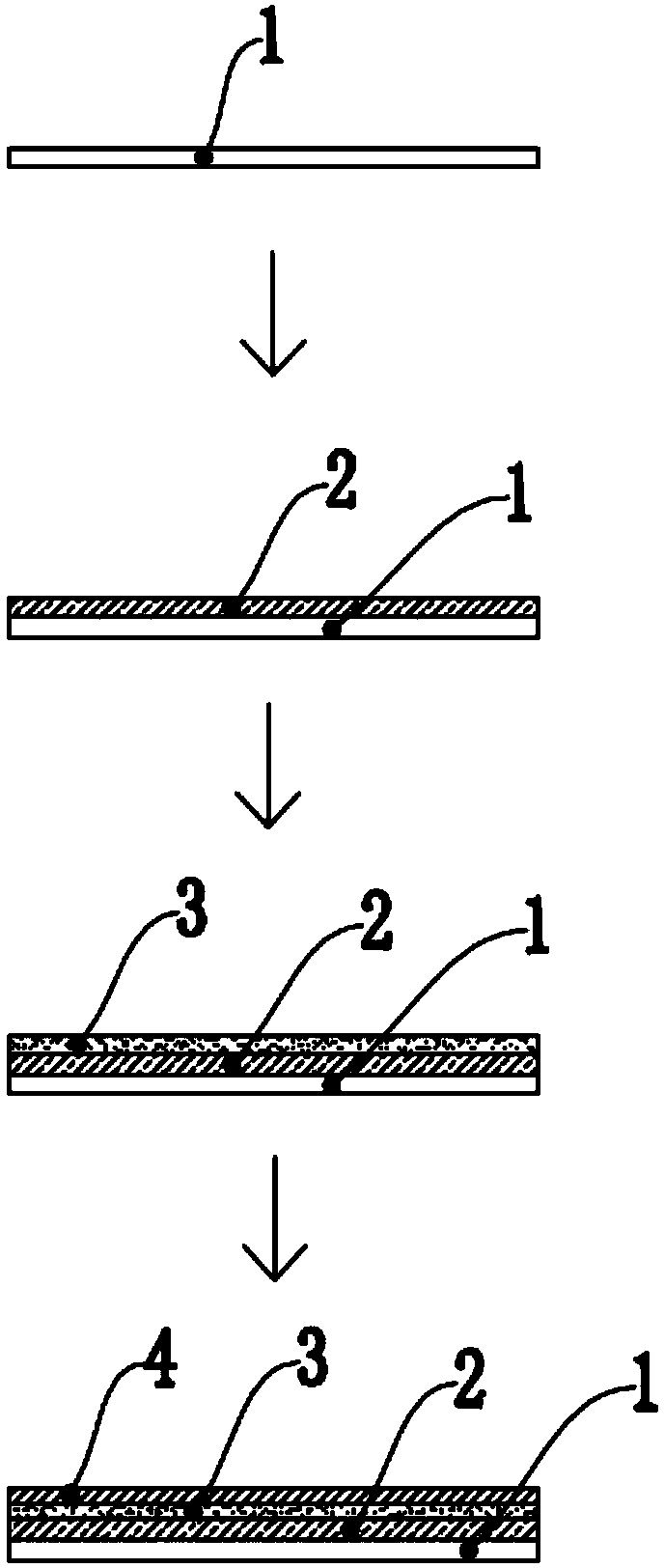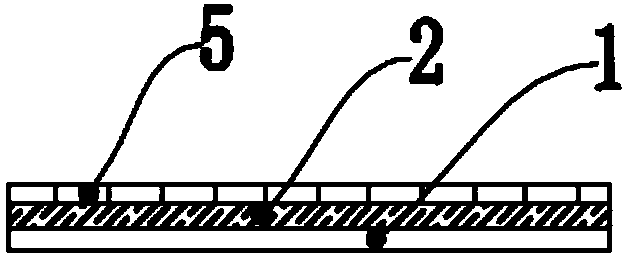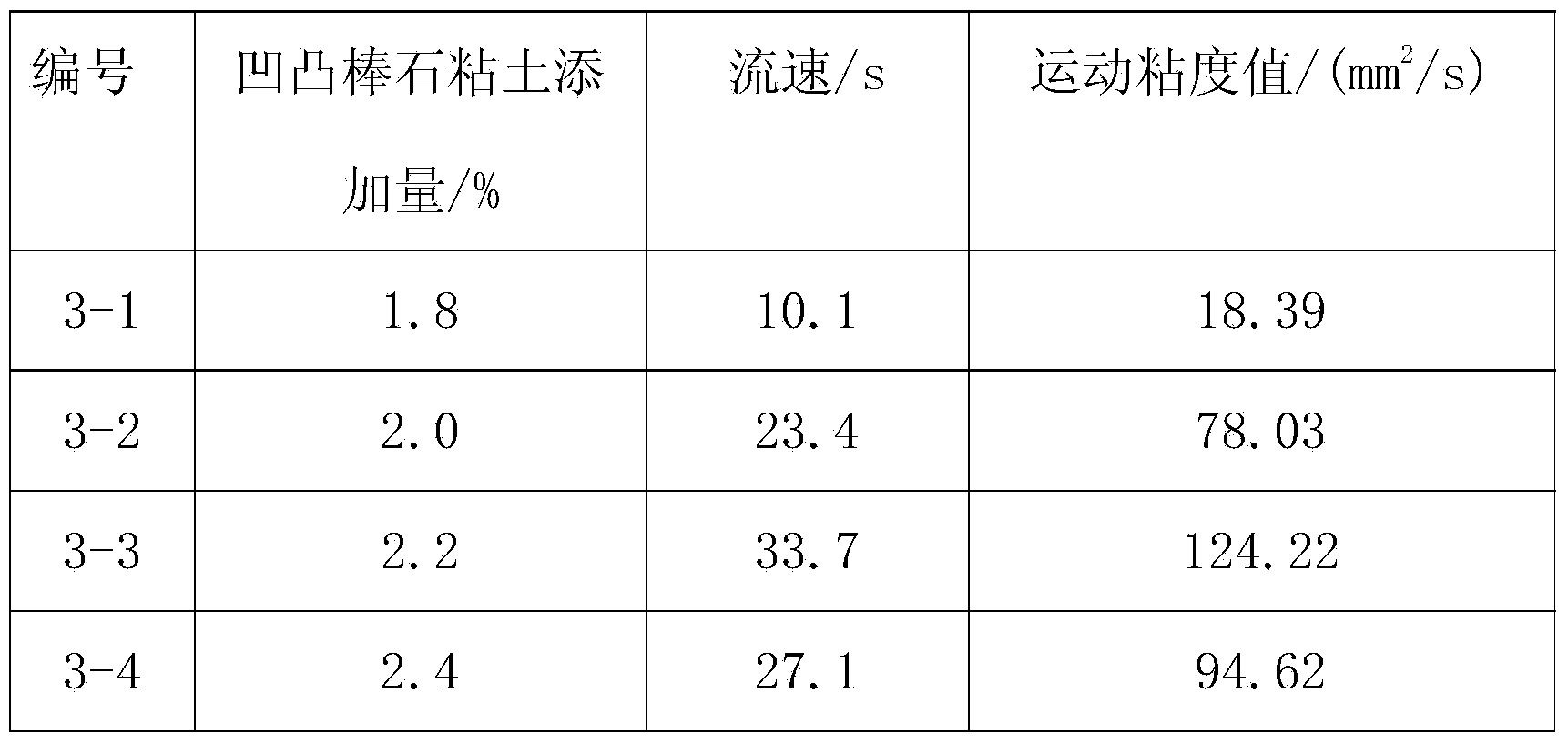Preparation method of one-step sintered glass-ceramic composite board
A technology of glass-ceramic and glass-ceramic frit, which is applied in the field of architectural ceramics, can solve the problems that glass-ceramic frit particles cannot play a role of bonding and fixation and are easily sucked away, and achieves the improvement of qualified yield and improvement The effect of flatness, avoidance of pinholes and air bubbles
- Summary
- Abstract
- Description
- Claims
- Application Information
AI Technical Summary
Problems solved by technology
Method used
Image
Examples
preparation example Construction
[0025] Preparation of the bottom glaze: kaolin, quartz, potassium feldspar, albite, calcite, talc, dolomite, zinc oxide, zircon powder, and pyrophyllite are mixed as raw materials for the bottom glaze with a thickness of less than 100 mesh, and an appropriate amount of water and 0.5% Sodium tripolyphosphate, 0.3% methyl cellulose, wherein the chemical composition of the bottom glaze is (wt%) SiO2: 50%, Al2O3: 20%, CaO: 9%, MgO: 2%, K2O: 2%, Na2O : 3%, ZnO: 4%, ZrO2: 10%, and the fineness is 0.5% of the slurry bottom glaze of the million-hole sieve for use. It should be noted that the preparation of green body powder, micropowder formula components and bottom glaze given here can be replaced by other formula components in the common knowledge, and all can be applied to the composite glass-ceramics of the present invention. In the preparation method of the plate.
[0026] The pyrophyllite in the bottom glaze has good water absorption, which can alleviate the deformation of the ...
Embodiment 1-1
[0030] A method for preparing a once-fired transparent glass-ceramic composite board, comprising the following steps:
[0031] A. Green body stamping and forming: After the green body powder (fineness is 150 degrees) and micropowder powder (fineness is 150 degrees) are layered, punched into a green body with a bottom blank layer and a micropowder layer, wherein the micropowder layer The thickness is 1 / 2 of the bottom base layer thickness, dry;
[0032] B. Glaze printing: After drying the green body in step A, clean the surface of the green body, spray the bottom glaze, and design pattern printing with rich colors on the bottom glaze by inkjet printing; here it needs to be explained, if the following steps The used glass-ceramic frit has a decorative effect after burning, and the printing step can be omitted.
[0033] C. Apply glass-ceramic frit: Spread transparent glass-ceramic frit on the surface of the body in step B and spray a layer of polyurethane fixative. The thickness...
Embodiment 2
[0059] A method for preparing a glass-ceramic composite plate with an ice crystal effect by firing once, comprising the following steps:
[0060] A. Green body stamping and forming: After the green body powder (fineness is 100 degrees) and micropowder powder (fineness is 100 degrees) are layered, punched into a green body with a bottom blank layer and a micropowder layer, wherein the micropowder layer The thickness is 1 / 3 of the bottom base layer thickness, dry;
[0061] B. Glaze printing: After drying the green body in step A, clean the surface of the green body, spray the bottom glaze, and design pattern printing with rich colors on the bottom glaze by roller printing; The glass-ceramic frit has a decorative effect after firing, and the printing step can be omitted.
[0062] C, applying glass-ceramic frit: spread frit particles (buy from Zibo Huaci Glaze Co., Ltd., 80 orders) with ice crystal effect on the body surface of step B and spray one deck of polyurethane fixing age...
PUM
| Property | Measurement | Unit |
|---|---|---|
| particle size | aaaaa | aaaaa |
Abstract
Description
Claims
Application Information
 Login to View More
Login to View More - R&D
- Intellectual Property
- Life Sciences
- Materials
- Tech Scout
- Unparalleled Data Quality
- Higher Quality Content
- 60% Fewer Hallucinations
Browse by: Latest US Patents, China's latest patents, Technical Efficacy Thesaurus, Application Domain, Technology Topic, Popular Technical Reports.
© 2025 PatSnap. All rights reserved.Legal|Privacy policy|Modern Slavery Act Transparency Statement|Sitemap|About US| Contact US: help@patsnap.com



